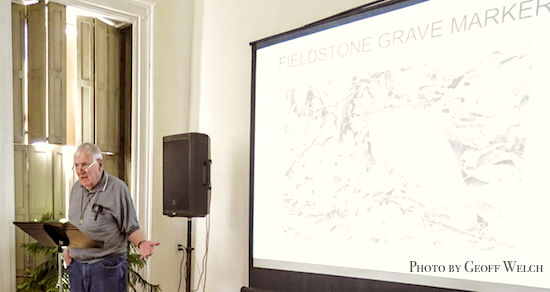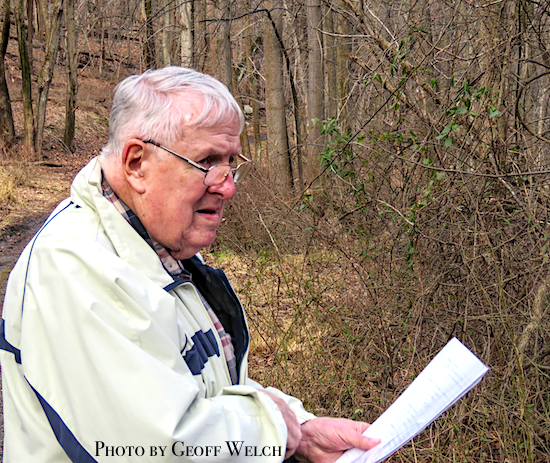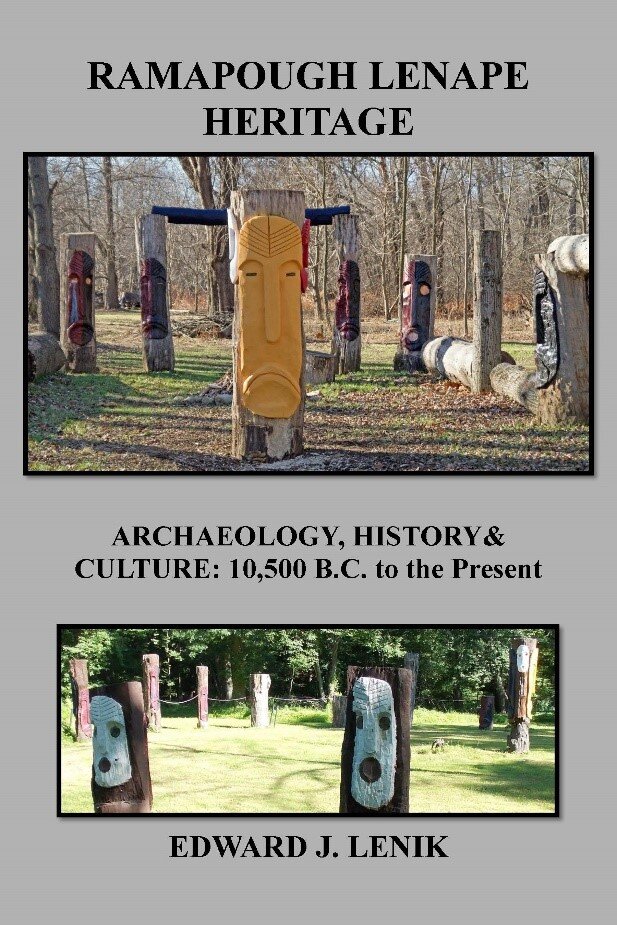 There are all sorts of stories and mysteries about the surrounding Ramapo Mountains. From stone walls and hidden rock shelters to myths and lore of local legends, the hills and lowlands along the Ramapo River have a lively history.
There are all sorts of stories and mysteries about the surrounding Ramapo Mountains. From stone walls and hidden rock shelters to myths and lore of local legends, the hills and lowlands along the Ramapo River have a lively history.
One interesting area of exploration has been the “Supposed Prehistoric Walls in the Wrightman Fields, Ramapo, New York” on Wrightman’s Plateau next to Sloatsburg. Located on high ground between the Ramapo River and foot of South Mountain, the collection of walls and mounds will be part of Archaeologist Edward Lenik’s discussion on Sunday, January 12, at Harmony Hall in Sloatsburg.
Lenik will hold a book signing and reading from at Harmony Hall from 2-4 p.m., where he will present material from his most recent book, Ramapough Lenape Heritage. There is a $5 suggested donation to help cover costs. Books will be on hand at Harmony Hall for those interested in purchasing.
PSA: Presenter Ed Lenik-on Ramapough people and history of Suffern, Ringwood and Sloatsburg. Friends of Harmony Hall: RAMAPOUGH LENAPE HERITAGE January 12, 2020, 2 pm to 4 Harmony Hall – Jacob Sloat House 15 Liberty Rock Rd. Sloatsburg,- https://t.co/vLkkpzy9M3
— Sloatsburg Elementary School (@SESPirates) January 3, 2020
Lenik has conducted extensive research and archeological field work in the Ramapo Mountains over many years and his latest work covers many aspects of the Ramapough Lenape people of northern New Jersey and southeastern New York. Lenik’s work suggests the continuous indigenous occupation of this area from about 10,500 BC to present, centered in the Ramapo River watershed.

Ed Lenik once again took a group on his annual New Year’s hike, this time exploring the Mahwah woods adjacent to the NYNJ Trail Conference Headquarters.
The mystery of the Sloatsburg stones, as the area is locally known, has teased people for years.
First officially mapped and labeled in 1845 by an unknown author who made map drawings, the “Supposed Prehistoric Walls” also make an appearance in the singular local history document of entitled The Ramapo Pass by E.F. Pierson, published in 1915.
Pierson suggests that the stone wall site in the hills was “hardly the work of the white man”:
Our attention has been called by Francis W. Doughty, a gentleman of antiquarian tastes, to primitive conditions to be seen today on the north side of the Ramapo Valley at the eastern end of the Old Writeman fields. Here at certain spots there is a singular arrangement of large stones hardly to be the work of the white man in clearing the land. Some of these cairns are isolated structures of curious shape and others are projections in the walls extending to Stony Brook Valley which leads into “Long Clove” and the regions about the Hudson River.
Lenik himself first explore and studied the site in the early 1970s and surmised that the site may have been part of an early farmer field clearing effort, “a common farming
practice in the northeast based on a stone masonry tradition brought over from England.”
One local stonemason who has studied the history of stoneworks in the surrounding mountains and parks believes that the mystery stone formation is actually part of a Revolutionary War fort constructed in 1778, possibly by British POWs. He said that, looking at the site as a whole, the natural ramparts appear to overlook the Ramapo Pass and defensive positions below. It is an obvious fortress and would have taken an army to build, he suggested.
Lenik ruled out a Revolutionary War fortification thesis, due to lack of factual evidence, although Fort Sidman’s at Sidman’s Clove was just across the Ramapo River and served as an important Revolutionary War Colonial troop junction.
Lenik’s native construction theory has evolved and his new books discusses his belief that the site is a Native American seasonal ceremonial site related to the positions of the constellations.
 Visit Harmony Hall on Sunday to hear for yourself about the mysterious Sloatsburg “Prehistoric Walls” and other archeological lore and facts found in Lenik’s latest book, Ramapough Lenape Heritage. Lenik will discuss topics from his fourth book on the Ramapough Lenape people of northern New Jersey and southeastern New York from 2-4 p.m..
Visit Harmony Hall on Sunday to hear for yourself about the mysterious Sloatsburg “Prehistoric Walls” and other archeological lore and facts found in Lenik’s latest book, Ramapough Lenape Heritage. Lenik will discuss topics from his fourth book on the Ramapough Lenape people of northern New Jersey and southeastern New York from 2-4 p.m..
Ramapough Lenape Heritage is a 280-page book, printed in color, features 13 tables and 128 illustrations including photographs, maps, field sketches and drawings and can be purchased onsite for $20. It can also be purchased from the North Jersey Highlands Historical Society Bookshop at Ringwood Manor State Park or can be ordered by sending a check for $20 plus $4 shipping and handling to North Jersey Highland Historical Society (NJHHS) at P.O. Box 248, Ringwood, NJ 07456.


